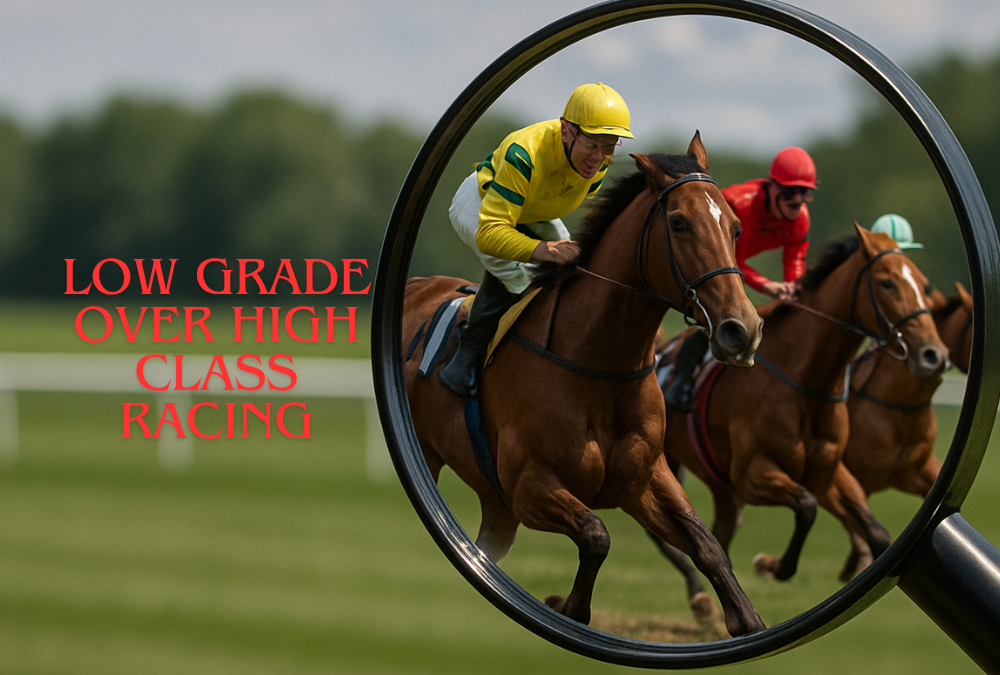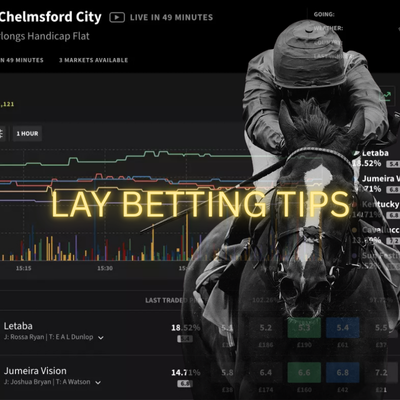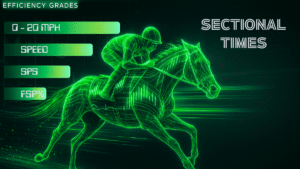Why I Focus on Lower Grade Horse Racing — Especially the All Weather Scene
Most people want the big races. Saturdays, TV cards, the flashy stuff. I’m not bothered about that. I’ve always been more interested in where I can find an edge — and that’s nearly always in lower grade horse racing, especially on the all weather.
There’s a reason I stay in this lane. Turf racing in the UK runs across about 40 different tracks. All with their own quirks — cambers, undulations, rail movements, changing ground. It’s hard work trying to stay on top of all that, and even harder to find something that repeats. Too many moving parts.
Now compare that to the all weather circuit. There are six main tracks — Southwell, Newcastle, Chelmsford, Wolverhampton, Lingfield, Kempton — and that’s it. You can really learn how each one plays. You start to see patterns. How pace works, which profiles suit where, and what setups tend to win certain types of races.
And in the Class 5s and Class 6s, especially on the AW, the form’s often messy. That puts people off — but for me, it’s where the opportunity is. You’re either dealing with exposed horses you can read clearly, or unexposed 3yos still working it out. Either way, if you know what to look for — how they’re being set up, what suits them, and how the track behaves — you can get a handle on things.
I’m not trying to cover everything. I stick to where I know I’ve got the best chance of reading it right. Lower grade all weather handicaps give me that — consistent surfaces, limited variables, and setups that repeat. That’s where I do my best work.
One of the biggest reasons I focus on low grade all weather handicaps is the horses themselves. The pool of runners is much smaller compared to turf. These horses race often, and they race against each other all the time. If you pay attention, you start to see familiar names, familiar setups, and familiar patterns.
Unlike the big flat yards aiming for a peak target every few months, these horses are usually running to their mark, and they’re in and out of races regularly. The majority don’t hold their form — they’re winners of circumstance, not class. Once they’re exposed, they hit a ceiling. And that’s where the UK handicap system comes into its own.
A horse in this grade might grab a win under ideal conditions — right trip, right setup, right pace shape. It gets put up a few pounds for it, loses competitiveness, and then has to run again and again to bring the mark back down. Once it’s dropped enough, it becomes eligible to win again under the right circumstances. That’s the cycle. Win, raised, lose, drop, win again — if everything aligns.
And they’ve all got their quirks. Some need pace to aim at. Some only go one way round. Some only travel for one jockey or on a certain surface. That’s why I build horse-specific profiles — I’m not just looking at the last 5–10 runs like most people. I go back and work out what actually suits them and what doesn’t. I talk more about that process in this blog post:

Let me give you an example: Obsidian Knight.
Here’s a breakdown from HorseRaceBase showing how track-specific this horse is:
Lingfield: 14 runs, 6 wins, 2 places, +54.82 profit to BF, 391% ROI
Chelmsford: 1 run, 1 win, +3.4 BF profit
Wolverhampton: 5 runs, 0 wins, 3 places, -5 loss but 60% place rate
Everywhere else (Ascot, Chester, Kempton, York, etc.): 0 wins, 0 places, consistent loss
The horses in these low grade all weather handicaps are a different breed — not in class, but in how they run and how often. The pool’s small. They run against each other constantly. Once you start watching closely, you begin to spot patterns — in how they’re campaigned, what suits them, and when they’re being set up for a run.
These aren’t horses that hold form. They’re not machines. They’re usually winners of circumstance, not outright ability. The whole thing revolves around the handicap system. A horse wins under the right setup — maybe trip, pace, or track — gets put up a few pounds, runs out of contention a few times to bring the mark back down, then the cycle starts again.
The difference is, most people just look at the last few runs and see duck eggs or a mixed bag of figures and switch off. But if you profile horses properly, you start to see the bigger picture.
Take Obsidian Knight, for example. His recent form reads 6926117. Most would glance at that and move on. But look closer and things get clearer.
The last run — that 7 — was on turf. He’s never run well on turf. So straight away, we can probably discount that as a non-suitable setup. Further back, we’ve got the 1s — both came at Lingfield, which is clearly his favoured track. When you dig even deeper into his old marks, you see the pattern: when his mark gets low enough and the race setup suits, he becomes dangerous. When it doesn’t, he runs poor, gets dropped a couple of pounds, and we wait for the right conditions again.
He’s due to run again on turf soon, and has been backed, most likely off the back of that valuable Lingfield win. But based on everything we know — turf record, mark, track — he’s not likely to be competitive. Yes, there are always exceptions, but this game’s about stacking probability, not hoping for miracles.
So what’s most likely? He runs poor again, the mark eases a bit more, and next time he turns up at Lingfield — bang. Well, that’s the theory. It’s not always that clean-cut, but it’s a repeatable pattern, and that’s what matters.
This is the kind of stuff that makes a difference. Not guessing — understanding what the horse is, and more importantly, what it’s not.
Why I Stay Away From Top-Class Racing – It’s Not Where the Edge Lives
Let’s flip it around now and look at the other end — the elite stuff. The Group races, the Listed level, the ones everyone’s hyping on social media and TV. Beautiful races to watch, no doubt. The quality on show is undeniable. But from a betting perspective, these aren’t for me.
These horses haven’t just ended up in the race by accident. They’ve been campaigned for it. They’ve hit targets, had their prep runs timed, and they’re trained by the best in the business. And unlike in Class 6s, these aren’t “winners of circumstance.” They’re in these races because they’ve got actual class.
Now here’s the thing — you can’t measure class until it happens. You know it when you see it. These horses hold their form, they back it up run after run, and pretty much all of them bring a rock-solid profile to the table. You go through the form lines and it’s all 11121112 or similar. No mystery. Just raw, proven ability.
And the deeper you go into the form, the closer you get to the top of the market. That’s where the problem starts. The horses are so exposed, so well known, so publicly campaigned, that there’s no hidden edge. The prices are tight. Most of the value is long gone. You’re often betting at poor odds on a horse that’s no secret — and even when it wins, there’s no long-term juice in it.
Compare that to Class 6 racing. A trainer might just say, “Right, the horse is fit — let’s find a race that suits.” There’s more variation, more quirks, and more scope for error — which means more scope for advantage if you’re watching closely.
Now I’m not saying these top-class races aren’t worth following — I watch them, I enjoy them, I appreciate the quality. But I don’t bet on them. Even if I landed on the same conclusion as the majority — and I probably would — I’d be left with a bad-value bet. Sure, it might win. But over the long term? The numbers don’t work.
It’s just not my style. I’m not interested in being right if there’s no edge in the price. And I’ve got no real interest in ante-post betting either — that’s just another game entirely, and one I don’t feel the need to play.
So yeah — the top-class racing’s great to watch. But when it comes to betting, I’ll stick to where the opportunities still exist. I’m not here to prove I can pick winners in a race where everyone already knows the answer. I’m here to find races where people don’t know what they’re looking at.
Why This Approach Gives Me Long-Term Control
The more time I’ve spent specialising in lower grade all weather handicaps, the more I’ve realised this isn’t just about picking winners — it’s about control. Control of what I’m betting on. Control of the process. Control of the numbers. There’s no scattergun approach here. I’m not chasing prices or trying to guess where a top trainer might land a touch. I’ve built a lane — and I stay in it.
I’m not looking at 60 meetings a week or trying to keep up with every angle. I’ve stripped it back. I’ve got a defined space — a certain class, a certain surface, a certain type of horse — and I operate inside it. I’m not always right, but I’m never guessing.
Because the horses I follow run often, I get constant feedback. They come back around every few weeks — same track, similar race, similar setup. That makes it easier to stick to the plan, easier to profile properly, and easier to avoid betting just because a race is “on.” If it’s not a race I understand, I leave it. There’s no fear of missing out. I’m not trying to be involved in everything.
Most punters jump from race to race, changing approach based on whatever form they read that day or what the market’s doing. That’s not sustainable. What I’ve built is a system where I don’t need to adapt constantly — because the edge comes from repeating a method I trust.
It’s also about mental discipline. When you know what you’re looking for, you stop overthinking. You don’t need to dig through 30 angles or hope for a bit of luck. You either see the setup or you don’t. And if it’s not there, you wait.
This isn’t about finding today’s winner — it’s about being on the right side of the long-term numbers. I’m not here to impress anyone with a 12/1 shot in a heritage handicap. I’m here to stay in the black month after month by betting into races that the market doesn’t fully understand.
That’s the real difference. This approach gives me structure. It gives me edge. And most importantly, it gives me control.
Closing Thoughts
I know a lot of people won’t agree with my approach — and that’s fine. It’s racing. Everyone’s got their own way in. Some specialise in top-class stuff and do well from it. That’s the beauty of this game — there’s no one way to win, it just depends how deep you go and whether your method suits you.
For me, it’s the all weather, the lower grade handicaps, and the patterns most people ignore. And I’m glad it’s not fashionable — because that’s exactly why the edge still exists. Let’s be honest: no one’s rushing home to watch the 8.30 at Southwell, are they? I don’t even watch most of them live — I work off replays, setups, structure. That’s where the real info lives.
The truth is, a lot of horse racing is just a backdrop to betting now. Most punters aren’t in it for the sport — they’re in it for the gamble. That’s fine. It is what it is. But by 8.30 at night, most of that crowd have already done their nuts and aren’t even looking anymore. Which suits me just fine.
People also say all weather racing is hard to read, or that horses take turns to win. But that’s no different to how I see some of the Group races — I find them just as tricky, just less interesting. The difference is, people actually try to understand the top-level stuff. They read all the previews, the hype, the stable whispers. You won’t see that for a 55-rated handicapper on the all weather. There’s no spotlight. No write-up in the trade press. And because of that, no one ever really learns it. They just leave it alone.
And that’s exactly why I don’t.















